#Mold casting
Explore tagged Tumblr posts
Text
So I definitely like the cup method best, at least for tiny guys like this. Made my first successful two part mold. I highly recommend this person's tutorials, they're very thorough and easy to follow.

They use foam board instead of cups, but it's the same process. Instead of acorn nuts, I used rubber pin backs. I may switch to acorns in the future, as the thin handle of the backs tends to be hard to release.
9 notes
·
View notes
Text
Batch of masks!

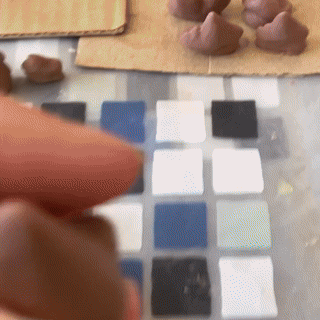





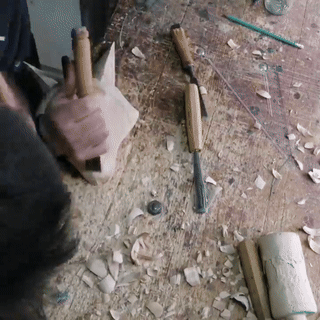
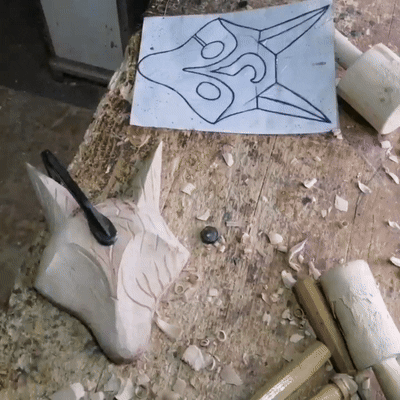
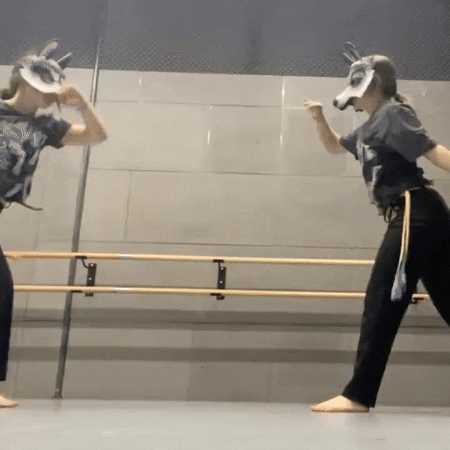



- The making of Sebastian silver fox - x x x - Wolf mask | Theatre props | Halloween mask | Cosplay party by InzSowa on Etsy
Though this isn't my footage, I took the time to make the gifs. See my terms of use BEFORE you reupload!
#articulated#clay#combat#cosplay#eyes#foxes#fursuit#gifs#kindred spirits#league of legends#leather#martial arts#mask#mold casting#moving jaw#painting#platinum fox#resin#stim#teeth#wolves#wood carving#woodworking#content: upload#creature: canine#cw: masklo#cw: scopo
5 notes
·
View notes
Text
What is the Difference Between Hard Mold and Soft Mold?
Mold manufacturing plays a crucial role in various industries, from automotive to medical devices, electronics, and consumer products. Understanding the differences between hard mold and soft mold is essential for selecting the right molding solution for specific production needs. This article explores the key distinctions between hard molds and soft molds, their applications, advantages, and considerations for choosing the right one.
Hard Mold vs. Soft Mold: Key Differences
1. Material Composition
Hard Mold: Made from durable materials like hardened steel or high-grade aluminum, designed for long-term and high-volume production.
Soft Mold: Typically crafted from softer materials such as aluminum, epoxy, or pre-hardened steel, suitable for prototyping and low-volume production.
2. Durability and Lifespan
Hard Mold: Offers superior durability and can withstand hundreds of thousands to millions of injection cycles without significant wear.
Soft Mold: Has a limited lifespan, usually ranging from a few thousand to tens of thousands of cycles before requiring replacement.
3. Production Volume
Hard Mold: Ideal for large-scale production runs where consistency and longevity are critical.
Soft Mold: Best suited for short-run productions, prototyping, or situations where design modifications may be needed.
4. Cost and Lead Time
Hard Mold: More expensive to manufacture due to the high-quality materials and precision machining required. However, the cost per part is lower in high-volume runs.
Soft Mold: More cost-effective for initial tooling and has a shorter lead time, making it ideal for rapid prototyping or small-batch manufacturing.

5. Surface Finish and Precision
Hard Mold: Provides high precision and excellent surface finish, which is essential for complex and intricate designs.
Soft Mold: May have slight variations in precision and surface finish, but it is sufficient for many applications requiring quick turnaround.
Applications of Hard and Soft Molds
Hard Molds:
Mass production of plastic components
High-precision parts for medical, automotive, and aerospace industries
Consumer electronics requiring tight tolerances
Soft Molds:
Rapid prototyping and product testing
Low-volume specialty items
Market testing before committing to large-scale production

Choosing the Right Mold for Your Needs
Selecting between hard mold and soft mold depends on several factors, including budget, production volume, timeline, and product complexity. Companies like Topwell Moulding specialize in delivering tailored molding solutions, ensuring that clients receive the optimal mold type for their specific application.
Conclusion
Both hard molds and soft molds play vital roles in the manufacturing process, each serving distinct purposes. While hard molds offer durability and cost-effectiveness for high-volume production, soft molds provide flexibility and lower initial investment for prototyping and limited runs. Understanding these differences enables manufacturers to make informed decisions, optimizing efficiency and cost-effectiveness in their production processes.
For high-quality injection molding solutions, visit Topwell Moulding.
0 notes
Text
Die Casting - An Insight into the Intricate Metal Forming Process
Die casting is a metal forming process where molten metal is injected at high pressure into steel molds or dies. Due to the high pressures involved, it results in products with very tight tolerances and precise dimensional specifications. This helps produce intricate components with complex internal passages in high volumes, at competitive costs compared to other manufacturing processes. History and Applications It is a relatively old manufacturing technology that was first developed in the late 18th century for producing metal buttons and thimbles. Over the years, advancements in metal alloys and casting equipment led to expanding applications of it, especially for zinc and aluminum. Today, commonly die cast metals include aluminum, zinc, magnesium, copper and tin-based alloys. Major industries using die cast components include automotive, industrial equipment, electronics, hardware, and household appliances. Common applications are engine parts, transmission components, housings, casings, and covers for electronics, tools, and consumer goods. It accounts for over 60% of all aluminum cast parts produced globally. Different Methods There are two main casting methods in use today - hot chamber and cold chamber Die Casting . Hot chamber machines maintain molten metal at a high temperature inside a holding furnace. Cold chamber machines solidify molten metal in a shot sleeve before injecting it into the die under pressure. Within these, there are further variants depending on the type of filling method - gravity, low/high pressure, and squeeze casting. Hot chamber casting is preferred for zinc and tin-based alloys, while aluminum alloys are commonly cold chamber die cast. Each method has merits suited for certain alloy compositions and part sizes/thicknesses. Process Steps The key steps involved in casting are: 1. Preparation of die and mold cavity 2. Melting and alloying of metal 3. Metal conditioning and transfer 4. Shot delivery into the die cavity 5. solidification under applied pressure and cooling 6. Die opening and part ejection 7. Finishing of cast parts The die or mold containing the cavity of desired part shape is first prepared using tool steels. Molten metal at 700-800°C is transferred and conditioned in the shot sleeve of the Die Casting machine. On trigger, a shot of melt is injected rapidly into the die cavity under very high pressures of 600-1500 kg/sq cm before solidifying. Accurate temperature control is vital to obtain quality castings. Design Considerations for Die Cast Parts Designing die cast parts requires careful planning to ensure production feasibility, dimensional accuracy, and assembly/performance needs. Key factors considered are part size/weight limitations, wall thickness variations and thick/thin sections, draft angles, gates and risers placement, machining/finishing requirements post casting, functional lives under service loads/temperatures, and surface finish needs. Finite element analysis involving thermo-mechanical simulations is often used at the design stage to validate castability. Functional designs help achieve dimensional consistency and elimination of defects in high volume production. Get more insights on Die Casting
Vaagisha brings over three years of expertise as a content editor in the market research domain. Originally a creative writer, she discovered her passion for editing, combining her flair for writing with a meticulous eye for detail. Her ability to craft and refine compelling content makes her an invaluable asset in delivering polished and engaging write-ups.
(LinkedIn: https://www.linkedin.com/in/vaagisha-singh-8080b91)

#Die Casting#Metal Casting#Precision Manufacturing#Aluminum Casting#Zinc Casting#Casting Process#Industrial Casting#Mold Casting
0 notes
Text
Really confused: what is roughness 0.8, 1.6, 3.2, 6.3, 12.5?
Do you know why roughness is 0.8, 1.6, 3.2, 6.3, 12.5?Let’s take it slow 1. Concept of surface roughness During machining process of parts, due to influence of plastic deformation of metal surface, vibration of machine tool and tool marks left by tool on the surface during cutting, various surfaces of parts, no matter how smooth they are processed, even observed under a microscope, can see…
#Design products#die casting#machining marks#Mechanical design#mechanical products#mold casting#plastic deformation#rough parts#Surface roughness
0 notes
Text

Country Kitchens, 1991
#vintage#interior design#home#vintage interior#architecture#home decor#style#1990s#kitchen#copper#cookware#cast iron#mold#basket#collection#Tappan#stove#country#American#antique
608 notes
·
View notes
Text
Normally I'd agree many Final Fantasy games have rather young protagonists. It's because they're usually single-player JRPGs made with the assumption of younger players, and like most Young Adult media, create characters that cater to that, even if it ends up with teens running the world and fighting in wars. And for many players, the first time playing these games is in childhood/adolescence/very young adulthood. So it's YA anime.
Final Fantasy XIV does not fall into that same mold, despite the "Teen" rating for legal and distribution purposes.
The majority of the FF14 cast, including the bulk of the main characters, are between 20 and 40 years old (the Scion Archons, Ishgard Elf Husbands). Many other characters are between 40 and 80 (Ishgard's Counts are all late middle aged to elder dads/grandpas, Gaius is mid 50s, Jehantel and Ran'jit are elderly, all still active). The younger characters (especially with any authority or special position) like the Leveilleur twins, are actually outliers. And the youth of the characters between 16 and 20 years old tends to be plot relevant, where that inexperience and naivety causes problems and drives story (Nanamo's arc at the end of ARR into HW, Alphinaud and the Crystal Braves, Ryne's determination of self in ShB, etc).
Characters have a variety of appearances; some characters in the same age ranges look very different. Varis is only 4 years older than X'rhun but Varis's model shows the stress and disagreeableness of his life a lot more than the RDM trainer's. Cid's in his mid-30s but with the beard looks older--and without it he has a baby face (hair color doesn't matter, cuz they do keep the anime trope of "everyone's got white or silver hair"). Lalafell are designed to be anime-cute halflings so it's hard to tell their adult ages even if they've got facial hair like grandfatherly Papashan. The pad'jal of course look like kids, but the youngest main pad'jal is A-Ruhn in his late teens; all the others are adults stuck in adolescent bodies. E-Sumi is a few hundred years old. Kan-E uses various methods to look older so other leaders and people from outside Gridania will take her seriously as an adult. The padjal introduced in the StB WHM quests is a child, and that's the plot; she's not in charge of anything, or has any particularly advanced-for-her-age skills. She's just a kid having a really rough time.
This inability to determine age by looking and assuming isn't just due to limits of the game engine and character creation options; it reflects real life. I met my work team for the first time in person recently; one person looked older than I know them to be, thanks to months of stress and health issues. While all of them were shocked to remember I'm in my 40s as according to them, I "look much younger". Most people are actually pretty bad at guesstimating ages based on appearance, due to the variety of folks' lives.
Speaking of kid characters, many of the children we interact with, like the Doman Adventurers, are between 12 and 14 and act much younger. Khloe has this going on too, with her age "corrected" to 13 (when previously listed as 10), but she acts way younger to me. Most of the actual child characters are treated like children, and it's not until they get to 14-16 (Honoroit, Leveva) that we start to see them treated like maturing adolescents and having some responsibilities, but still young and prone to the kind of choices one expects of less experienced and more emotional youth.
As a MMO, FF14's primary audience is actually adults; teens do play the game, but also age up with it if they keep playing. If a 15 year old began playing with ARR's release, they're in their mid-20s now. Having a primarily adult cast, and treating child characters like children, and adolescents like young people figuring out how young adulthood works, makes sense for this game.
FF14's time bubble is also part of the issue; a developer tool to keep it so they don't have to worry too much about character ages, new models so often, or how long things take in game. Timelines are then intentionally left malleable for the players' benefits, to create our own stories and determine how long things take for our WoLs and their tales. Some folks have their stories pass in real time, some compress it to a year per expac, some expand it out even longer. So the ages the characters have listed in the lorebooks and rarely in game (which is then reflected in online resources), is a starting baseline. Personal headcanons as always should be applied (including changing around some character ages to fit one's own story if necessary).
Also, FF16, made by the same team, has a brief prologue/tutorial section where the main trio is between 10 and 15, guided/trained by adult characters, experience the inciting incident trauma--and then we spend the majority of the game with the main cast in their 20s and 30s. The game also has a mature rating, featuring some sexual situations, lots of violence, and stronger language than other FF games. It's made for adults, and its cast reflects that.
So it is a matter of audience expectations; for a MMO, you're going to have an older and aging player base, and the varied ages of the cast reflect that, as do their varied appearances and experiences as adults. The young characters are treated closer to how their youth should be; still with respect for those in positions like Nanamo, but also prone to errors due to inexperience that drive story. In other FF titles, which were made to be more YA-focused, a teen and young 20s cast were treated much differently. But even in the single-player FF titles, if they are made with adult players in mind, their cast and stories likewise reflect that.
#final fantasy xiv#audience#time bubble#ages#aging#cast#gang's all here#I agree most FF games don't have main casts outside the teens but there's reasons for that#and one can't really fit FF14 into that same mold when the cast is this large and varied#yes this is kinda in response to another post but not putting them on blast#meta analysis
242 notes
·
View notes
Text
we've all had thoughts about what makes leander a monster, but what if it's literally just that he's a horrible human. that's it.
#he's not physically genetically a monster. he's just a fucked up guy through and through#idk this game explores monstrosity in a rlly complex way (like mc being a monster too) so maybe they wanted to include an actual normal guy#in the main cast. because humans can absolutely be monsters too.#touchstarved game#leander#hcs#has anyone already said this. my brain is pure mold atp so i'm sorry if i'm just regurgitating ideas#( A SPARROW SINGS ) * my posts!
75 notes
·
View notes
Text

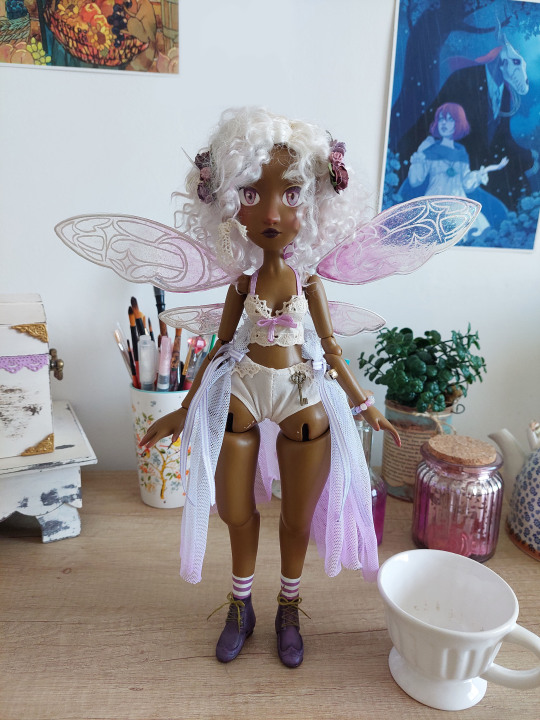
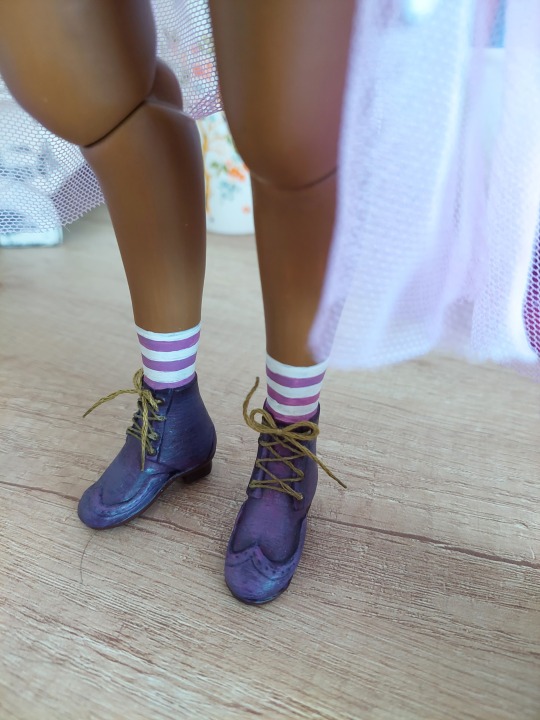
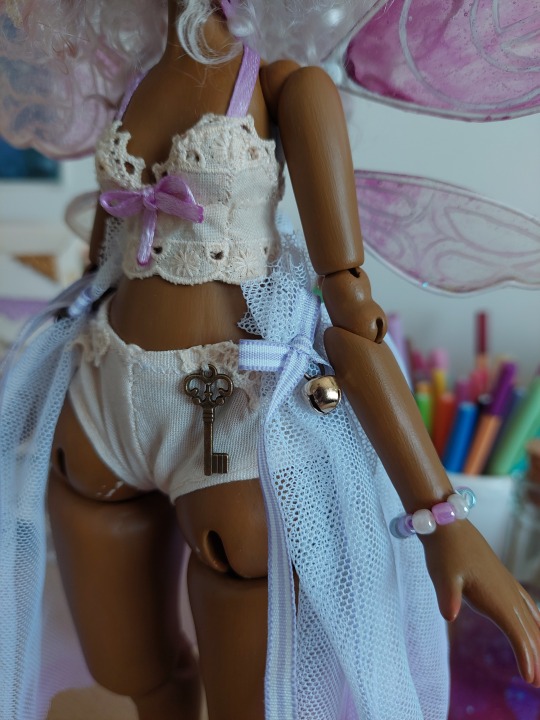


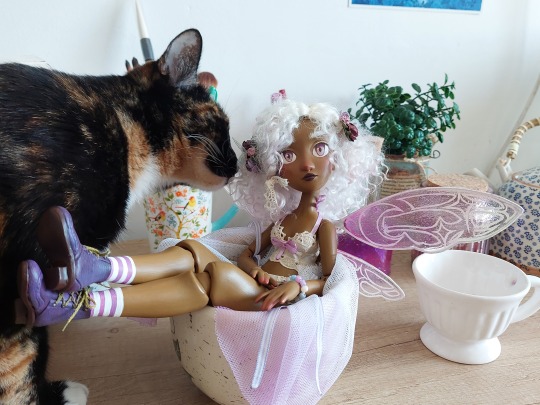
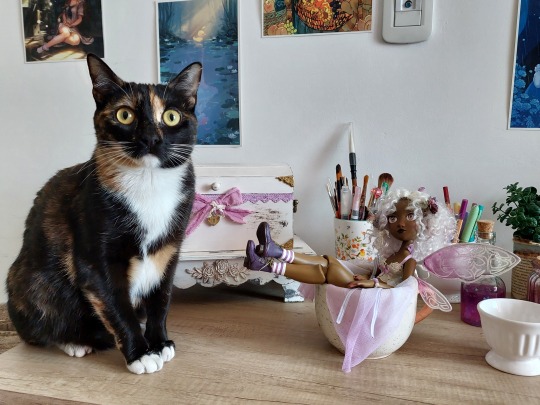
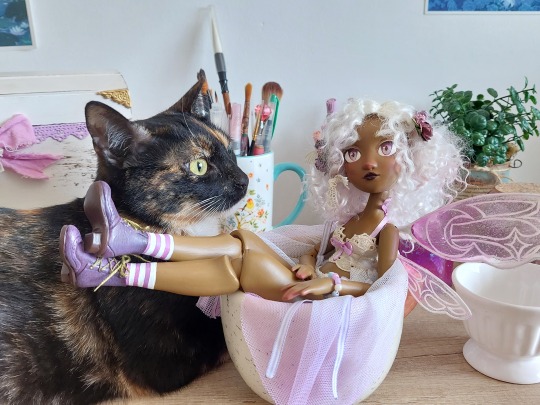
Final pictures of my original ball jointed doll. She is so incredibly beautiful and I'm so proud of her.
Also enjoy my cat always trying to be the main character...
#handmade#bjddoll#art doll#cold porcelain#ball jointed doll#ooak doll#fairy#yes i sculpted it and made the molds myself#then casted it in clay#her hair is actual mohair locks that i washed and dyed omg#this took so long but look at her
55 notes
·
View notes
Text



lost wax casting

Behold the sweatshop
#bronze#splatoon#splatoon art#my art#videogames#videogame art#3d art#metal#metals#pins#metalsmithing#casting#made the original out of wax- then i casted it in metal- then i polished up the metal one and used it to create a vulconized rubber#mold- then cast like- 25 something of these horrible lil creatures#i died 100 deaths makeing these#anyways the bronze has aged and isent really shiney anymore except for the 2 pins i hit with the steel wheel :/#for the record i used wax on these to try and seal them so its not my fault!#these took me so fucking long- look at them. LOOK AT THEM.#SPLATOON 3#i did a print of inkling (splatdare) as neo 3 so for this project i made octoling neo 3 :]#into the stars~#those stars nearly killed me as well. please look at them. my hands nearly fell off from gettin off and fixing where the sprews were#attached#i was working on this project up till the very last second i chould be. i was in there with the lot of another class as i desratly was#soldering on all those pins that night. the soldering was really easy and actsholly medatative but god did it take so long...#and then buffing all of them- and then livering 90% of them-
25 notes
·
View notes
Text
Topwell Hard Moulds is a one stop for the right solutions of product design and development
Discover expert Hard Moulds services at topwellmoulding.com. We offer innovative and precise Hard Moulds solutions tailored to your specific needs, ensuring quality and efficiency in every project.
0 notes
Text
This Children of Blood and Bone casting is not it. Amandla....bestie, listen----
#children of blood and bone#tomi adeyemi#like....so was the wide casting call just some bs or...?#also i know we all see “children” in the title so why is most of the cast age 30 and over?#imma at least give the pjo its flowers for casting actual kids even if i wish it had been animated#from what i can remember the main female protagonist is described as being dark skin similar to her brother#and receives harsh treatment from her family especially her mother bc of it#and casting directors thought amandla fit that mold?#this isn't me even hating on their acting but more so them taking a role that should've went to someone else#we need more young black talent
17 notes
·
View notes
Text


the autism may have won tonight, but I stay winning every day

#i also bought little halloween baking molds for mika and i's summerween party :3#magiquest#if you see some doucher in this shirt crying at broadway at the beach where the mq building used to be........ no you dont. carry on.#also thank you skeltal for feeding the mq community I almost bought the cast the lightning shirt too djsjdjds
22 notes
·
View notes
Text
making new master casts from plasticine sculpts 😸💕
#cats#sculpture#handmade#plaster cast#plasticine#plasticine sculpture#mold making#mold making and casting#mold casting#soap design#soap mold#soap making#polymerclay#wip#timelapse#ebsculpts
0 notes
Text

She/Him Sculpture by Gora Donovan, 2024
"This is not just a statement of my gender, it is a love letter."
This is my favorite thing I've made all semester and words cannot properly describe the joy I feel looking at it.
The road to it was a masissive headache; we even had to break the shell of the mold to get it out - but, God, was it worth it!
For anyone curious it's a plaster cast of a rubber mold I made.
#op content#my art#plaster sculpture#rubber mold casting#queer art#bigender#bigender pride#genderfluid#pride#lqbtq art#trans art#queer artwork#fine art#sculpture
8 notes
·
View notes
Text
Good News: They found the original S1 Thomas prop!
Bad news:

I swear this had better be some kind of joke-
Source: https://propstoreauction.com/auctions/catalog/id/399?page=1&view=grid&cat=8845&catm=any&order=order_num&xclosed=no&featured=no
#ttte#thomas and friends#thomas the tank engine#trains#ttte thomas#props#destroyed#ttte 40th anniversary#original prop#Thomas the tank engine and friends season 1#thomas the tank engine and friends season 2#auction site#poor guy#he didnt deserve this#the reason he looks like this is because they made resin casts of him during Season 12 to give to crew members#i assume they had to pull him apart to get him to fit in the molds#if it's a joke it must be a very convincing one as the original hector prop was also listed and he seems identical to the real thing :(
12 notes
·
View notes